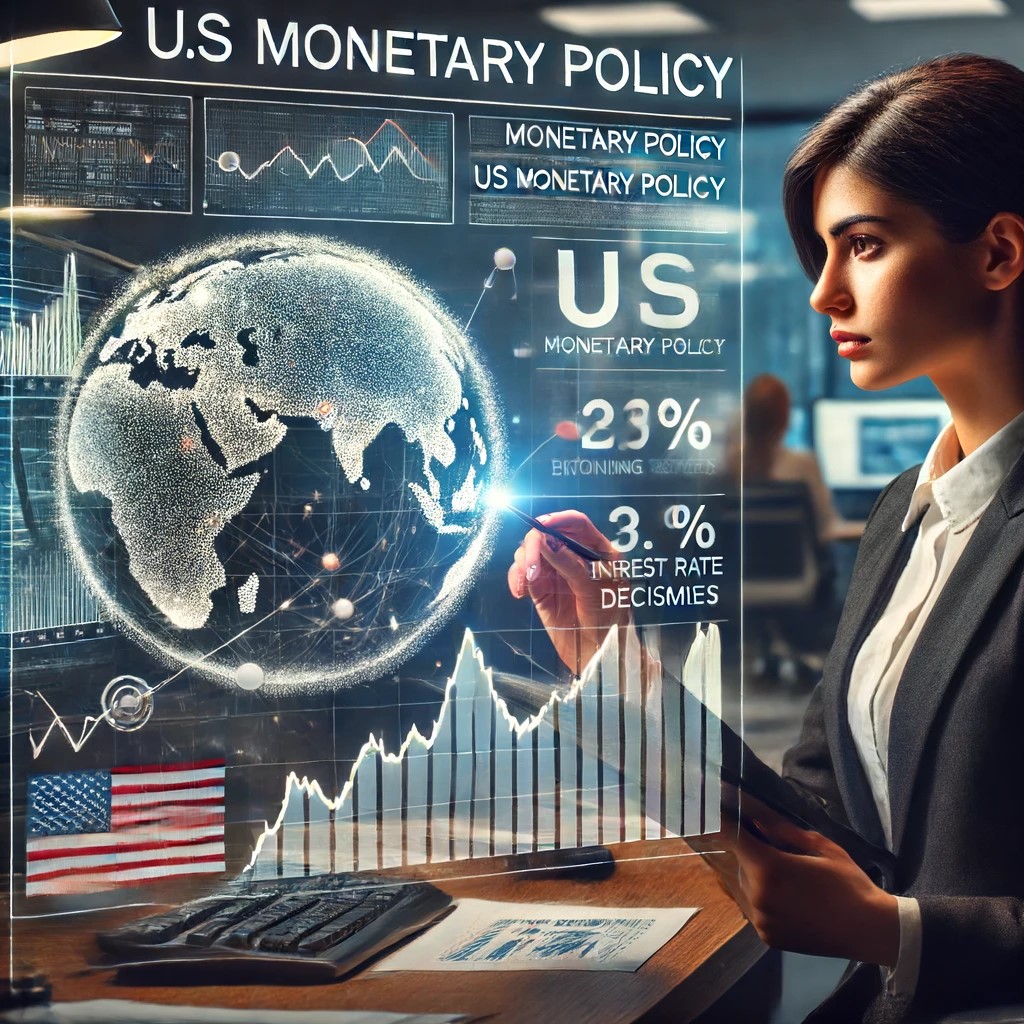The United States' monetary policy, primarily orchestrated by the Federal Reserve (the Fed), wields substantial influence over the global economy. This policy not only dictates the economic health within its borders but also has far-reaching effects across the globe, impacting exchange rates, investment flows, and economic stability in other countries. This article delves into the mechanisms of this influence, explores current trends, and forecasts potential future developments.

Mechanisms of Influence
1. Exchange Rate Fluctuations:
US monetary policy significantly affects the dollar's strength. For instance, an increase in US interest rates generally boosts the dollar's value, making American assets more attractive to foreign investors. This can lead to a depreciation in other currencies relative to the dollar, affecting global trade balances.
2. Capital Flows:
Interest rate adjustments by the Fed can lead to shifts in global capital flows. Higher rates tend to attract foreign capital seeking higher returns, impacting emerging markets by drawing investment away from them. Conversely, when the Fed lowers rates, investors might seek higher returns in other markets, increasing capital flows into these economies.
3. Commodity Prices:
The dollar's strength influences commodity prices globally. Since many commodities are priced in dollars, changes in the US interest rate (and thus the dollar's value) can affect the cost of commodities like oil and metals. This impact is profound for resource-dependent countries whose economies rely heavily on exporting these commodities.

Current Trends
1. Response to Economic Crises:
In recent years, notably during the COVID-19 pandemic, the Fed's monetary policy has been characterized by low interest rates and quantitative easing to stimulate the economy. These actions, while stabilizing the US economy, have had mixed effects globally, from supporting global liquidity to creating challenges for economies dependent on exporting to the US.
2. Regulatory and Supervisory Adjustments:
The Fed is also making strides in adjusting regulatory frameworks to enhance financial stability. This includes more stringent stress tests and higher liquidity requirements for banks, which aim to make the financial system more resilient, not just domestically but also globally.

Future Predictions
1. Gradual Tightening of Monetary Policy:
Economists predict that the Fed may begin to tighten monetary policy to combat inflationary pressures. This shift could lead to increased US interest rates, affecting global investment patterns and potentially strengthening the dollar against other currencies.
2. Increased Focus on Sustainable Finance:
Future US monetary policies may incorporate aspects of sustainable finance, considering environmental, social, and governance (ESG) factors. This could influence global financial markets as other central banks and financial institutions align their practices with these emerging standards.
Conclusion
US monetary policy is a critical driver of global economic dynamics. Its influence is profound and multifaceted, affecting everything from individual spending power in foreign countries to the economic stability of entire regions. As the world economy becomes increasingly interconnected, the ripple effects of decisions made by the Federal Reserve are set to expand even further, underscoring the importance of strategic policy management and international cooperation in fostering global economic stability.





